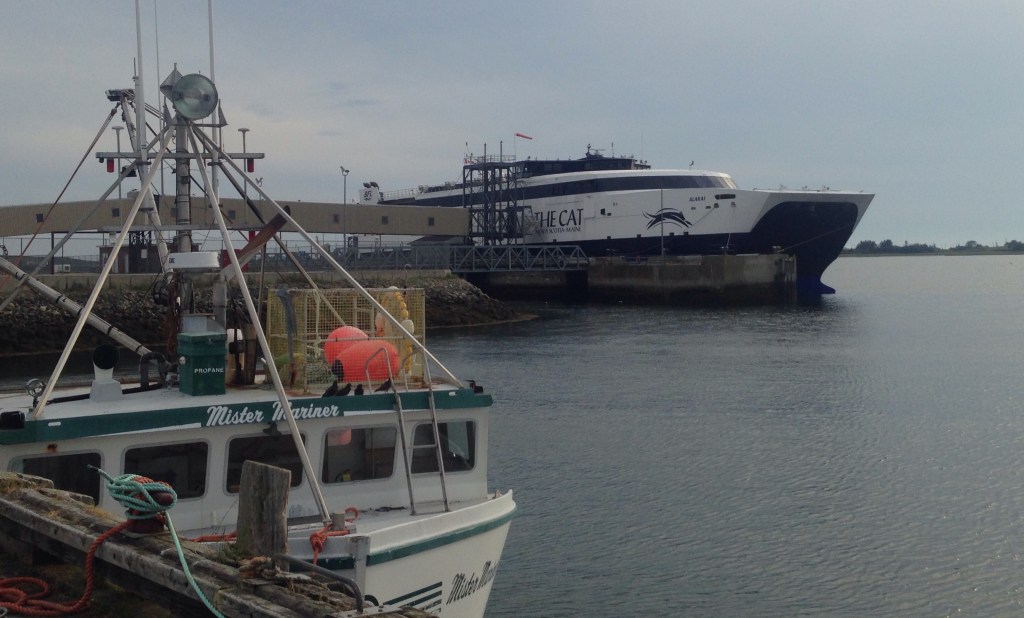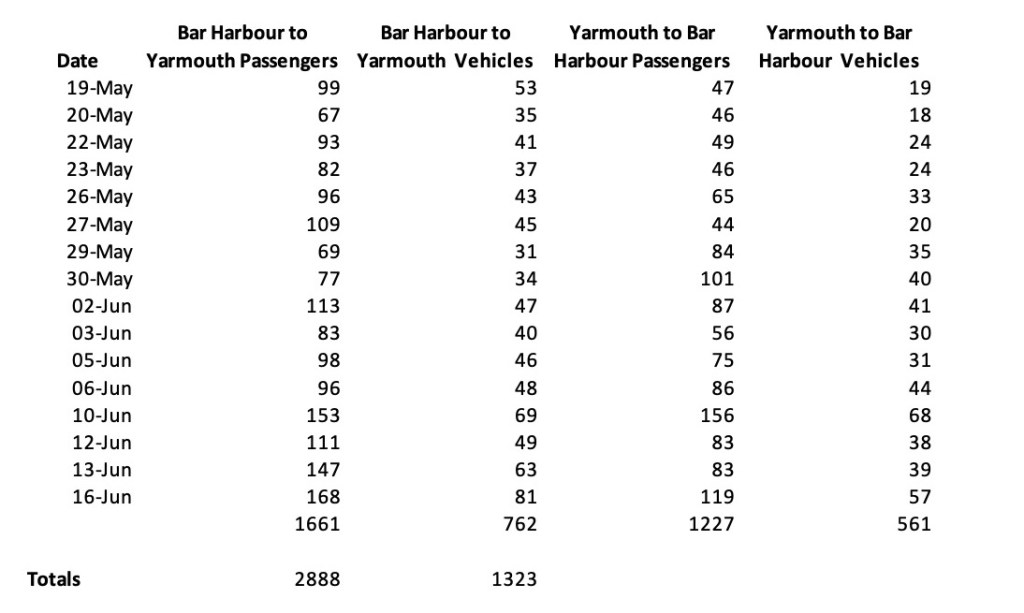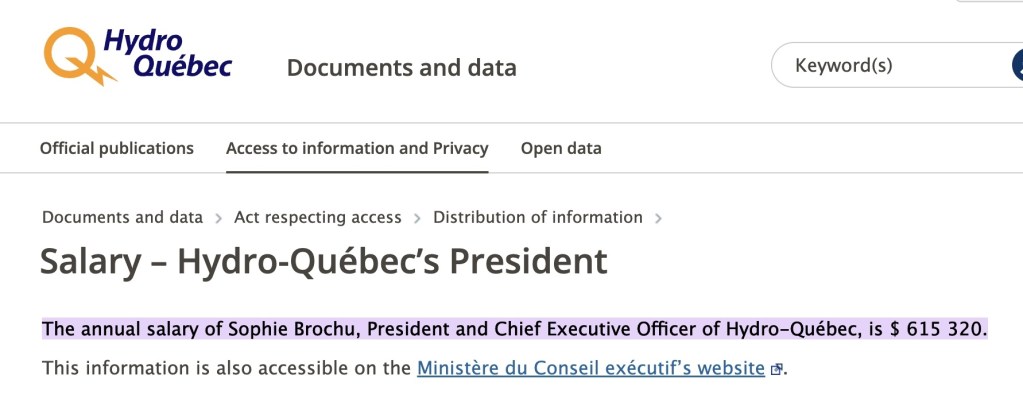Whatever happened to Thursday? What’s so affordable about so much housing? Why so little information about power company pay? And other thoughts on a June day.
Whatever happened to Thursday?
On Thursday, the CBC’s Anjuli Patil reported the Houston government had decided not to release passenger numbers for our controversial, heavily subsidized Yarmouth-to-Bar-Harbor ferry.
When asked directly about passenger numbers on Thursday, Minister of Public Works Kim Masland said the province won’t report those figures on a monthly basis. Instead, she said operator Bay Ferries will release the number of tickets sold overall. Last week, that number was 15,100 tickets — 65 per cent of which were for July and August.
“It’s a very dynamic tourist industry right now. What I would like to focus on myself as the minister is the fact that here we have an opportunity to be really bringing tourists into our province,” Masland said.
Less than 24 hours later — two-and-a-half-hours before the close of business on a Friday afternoon — the same minister released this statement, pretending there’d been no Thursday:
Today, June 17, I am releasing the number of passengers who have travelled on the Nova Scotia-to-Maine ferry this season to date, which was provided to the Department late last night by Bay Ferries Limited.
In accordance with the 10-year contract entered into on March 31, 2018, between the Province of Nova Scotia and Bay Ferries Limited, Bay Ferries Limited is the manager and operator of this service. Under the terms of this existing contract, Bay Ferries is responsible for marketing the ferry, selling tickets and, ultimately, whether the service is a success or failure.
Our government feels very strongly that Bay Ferries owes it to Nova Scotians to be fully transparent about how the service is performing. We have requested that the operator provide daily updates on its website going forward, but the operator has declined. This is why we are providing these numbers directly today. If Bay Ferries will not be fully transparent, we certainly will be.
This government is bound to a contract entered into by a previous government. I want to assure Nova Scotians that I will do everything possible to make sure Bay Ferries Limited is transparent and accountable to Nova Scotians.
Oh, to have been a fly one the wall for the conversation between Masland and Premier Tim Houston in the aftermath of the Thursday that no longer happened.
You may recall that the infamous Yarmouth-to-Nowhere ferry had not carried a passenger in the three years before this May, not all of that COVID-related. Despite that, Nova Scotia taxpayers paid Bay Ferries $1.17 million per year to manage not to sail. Now that Bay Ferries back in sort-of business, we will be on the hook for much more in the way of subsidies.
In case, you were wondering, this year’s early numbers, which Masland released Fridau, are… not encouraging.
Between May 19 and June 16, the CAT ferry made 16 round trips. Officially, the ferry can carry 866 passengers per crossing, meaning the theoretical possibility is that it could have accommodated 27,712 passengers to date. Theoretically.
The actual number was a total of 2,888 passengers.
But it’s early, so we should focus on the “opportunity to be really bringing…”
Oh, right. That was Thursday.
***
Last week’s column about the lack of information after the death of a worker the month before at Michelin’s Waterville plant — which led to a brief Stop Work Order and a so-far explanation-fee investigation — prompted a specific question from a reader: “Were work procedures at the plant modified before the Stop Work Order was lifted?”
I asked. The answer from the department of labour:
We cannot speak to specific details as the investigation is currently ongoing. However, our general practice during investigations involving equipment is to issue a Stop Work Order right away to secure the equipment for examination and testing. Once confirmed that the equipment is safe to operate, the Stop Work Order can be lifted and operations can resume. More information, including details about the examination and testing of equipment, would be available once the investigation is completed.
Translation: we’re not saying.
***
It’s impossible to walk the streets of the peninsula these days without finding yourself under the looming shadow of a construction crane or smacking up against a pedestrian detour past long blocks whose sidewalks have been bulldozed and barricaded to accommodate construction sites.
According to the Canada Mortgage and Housing Corporation, the crown corporation that keeps tab on such things, there were 6,584 “dwelling units” under construction in Halifax in April. Most of those — 5,766 — were apartments.
Despite never-ending whinging from developers, the city’s planning department — which reported a “huge bump” in the volume of applications for major development projects during the first five months of 2022 (already accounting for 80 per cent of the total of 5,600 permits approved in all of 2021) — says the average wait time to green light a major project is just 32 days.
But all that activity raises an important question.
How many of these units will be of the desperately needed affordable housing variety?
I put that question to Laura Wright, a media relations person with the city.
“The municipality currently has no tool to distinguish which units would be considered affordable,” she reported back. “Through projects associated with the Rapid Housing Initiative and HRM Affordable Housing Grant Program we are aware of 81 units (five projects) that are under construction and 130 units (three projects) that have applied for permits and are under review.”
Two hundred and eleven units… out of 6,584.
Last year, the Nova Scotia branch of the Canadian Centre for Policy Alternatives published a report suggesting we need more than 30,000 “permanently affordable” housing units.
“I think that we probably have pretty good consensus in this province that just a market-based approach to housing is inadequate,” researcher Catherine Leviten-Reid told my colleague Yvette D’Enremont.
And yet…
In late March, the province announced it was providing Clayton Developments with a forgivable $22 million loan to incorporate 373 new affordable units into a planned 875-unit project in Dartmouth’s Mount Hope neighbourhood.
“This project,” Housing Minister John Lohr bragged at the time, “will produce more affordable housing units than all our programs have produced in the last three years combined.”
But those units only need to be deemed “affordable” — 20 to 40 per cent below the local average already unaffordable-for-many rent — for 20 years.
It’s worth noting too that the funding the province is providing to Clayton will also swallow, in one giant gulp, two-thirds of the $35 million Lohr allocated last fall to supposedly create 1,100 new affordable housing units.
Provincial politicians and policymakers continue to assume the “trickle down” impact of adding thousands of pricey new housing units into the mix — with a few faux affordable units — will eventually, someday, some way, somehow produce affordable housing for all.
Trickle down… How did that work out with the economy?
***
Peggy Cameron, a well-known community activist, responded to my recent column on Nova Scotia Power’s application for a rate increase with interesting additional context.
We already know — according to documents Emera, the publicly traded parent company of privately owned subsidiary NS Power is required to disclose — that NS Power CEO Peter Gregg pocketed $804,224 last year in “base salary, share awards, share options incentives, pension value and perks.”
For comparison’s sake, Cameron notes, Sophie Brochu, the president and CEO of Hydro‑Québec, a public utility, earned $615,320.
But let’s dig deeper into that comparison.
Hydro‑Québec, writes Cameron, “delivers reliable electricity to over four million Québec customers and exports huge amounts of power to wholesale markets in the northeastern United States and neighboring Canadian provinces.”
NS Power? Not so much.
NS Power’s customer base is just 520,000 residential, commercial and industrial users.
Exports? Not so much either.
According to the Canada Energy Regulator, “in 2019, Nova Scotia’s net inflows accounted for almost seven per cent of total electricity consumed in the province.”
You may recall that I mentioned in my column that, in preparation for its rate increase application, NS Power hired Grant Thornton to come up with numbers for executive compensation and also Mercer Consulting to prepare two reports that supposedly explained how the utility’s executive pay packages compared to others in the industry.
Initially, the power company had tried to keep a total lid on all those reports.
Complained consumer advocate Bill Mahoody in response:
Ratepayers are being prevented from understanding the basis upon which NS Power claims that its executive compensation is reasonable. [Without that information] ratepayers are left with no basis to challenge the overall reasonableness of the expense.
After which, NS Power’s top regulatory lawyer pretended to concede, offering to release only “the market comparable aggregate amount of total direct compensation that is included in the Mercer Reports” because he claimed that number demonstrates “the compensation included in the General Rate Application is below market.”
Really? And what does the information in the rest of report show? Where does Quebec Hydro fit in?
Last week, the utility and review board sort-of rejected the power company’s position, ruling that it must release the collective compensation paid to company executives, including top-ups from Emera.
“The board concludes that the public interest outweighs NS Power’s arguments for keeping the information ‘Board Confidential’, including the executive team’s reasonable expectation of privacy,” the board ruled.
But — there’s always a but — the Mercer reports can only be seen by formal intervenors who have already agreed to keep the information confidential.
So we can know the aggregate compensation but not what supposedly underpins it.
And so it goes.
***
A version of this column originally appeared in the Halifax Examiner.
To read the latest column, please subscribe.








 STEPHEN KIMBER, a Professor of Journalism at the University of King's College in Halifax and co-founder of its MFA in Creative Nonfiction Program, is an award-winning writer, editor and broadcaster. He is the author of two novels and eight non-fiction books. Buy his books
STEPHEN KIMBER, a Professor of Journalism at the University of King's College in Halifax and co-founder of its MFA in Creative Nonfiction Program, is an award-winning writer, editor and broadcaster. He is the author of two novels and eight non-fiction books. Buy his books
Wish I could do the math, over 3 million not operating,now justover 2000 passengers, how much has it cost each NS taxpayer to get a few people to NS.